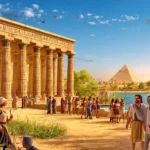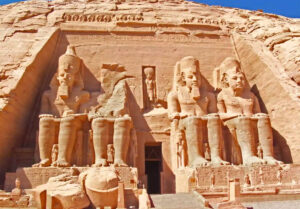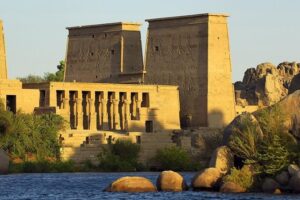Roman Egypt refers to the period when Egypt was a province of the Roman Empire, from 30 BCE until 641 CE. This era began after the defeat of Mark Antony and Cleopatra VII at the Battle of Actium and ended with the Arab conquest of Egypt. This period saw a fascinating blend of Roman administration, Hellenistic culture (which had been dominant since the time of Alexander the Great), and traditional Egyptian practices.
Political and Economic Significance
Egypt held a unique and vital position within the Roman Empire.Egypt was considered the emperor’s personal domain. A prefect of equestrian rank governed it, not a senator. This was a strategy to prevent powerful Roman senators from challenging the emperor. Egypt’s special status stemmed from its role as the “breadbasket” of the empire. Its fertile land, fed by the Nile River, produced a massive grain surplus. This grain was essential for feeding Rome’s population. The supply was crucial for food security and for preventing urban unrest.
The Romans also revitalized the Red Sea ports. This boosted trade with India and other eastern regions. Control over these key trade routes brought substantial revenue to the empire. It further cemented Egypt’s economic importance.
Society and Culture
Roman rule in Egypt was not about forcing a full-scale “Romanization” on the population. Instead, it was a complex process of adaptation and change. The social structure was stratified, with Roman citizens at the top, followed by the Hellenized inhabitants of cities like Alexandria, and finally the native Egyptian populace. The poll tax, for example, was levied at different rates depending on a person’s social class and citizenship status.
Culturally, this was a period of syncretism. Egyptian religion continued to thrive, often blending with Greek and Roman beliefs. For example, the cult of the goddess Isis became popular throughout the Mediterranean. However, traditional Egyptian artistic styles and funerary practices also absorbed Greco-Roman elements. The most famous example of this is the Fayum mummy portraits, realistic painted panels in a Greco-Roman style that were placed on the mummies of the deceased. These portraits offer a remarkable glimpse into the faces of people from this time, showcasing a blend of Roman fashion (like hairstyles and clothing) with the ancient Egyptian tradition of mummification.
The Transition to Byzantine and Arab Rule
In the late Roman period, the reforms of Emperor Diocletian restructured the province into multiple smaller administrative units. Eventually, with the division of the Roman Empire in 395 CE, Egypt became part of the Eastern Roman Empire (Byzantine Empire). Christianity rapidly became the dominant religion, leading to the decline of ancient Egyptian religious practices and the closure of temples.
The Roman presence in Egypt ended in the 7th century CE. After a brief Sassanian Persian occupation, the Arab conquest under the Rashidun Caliphate brought the province under a new sphere of influence, fundamentally changing the political and religious landscape of Egypt for centuries to come.
Check Egypt’s weather and contact us for your Egypt tours.











